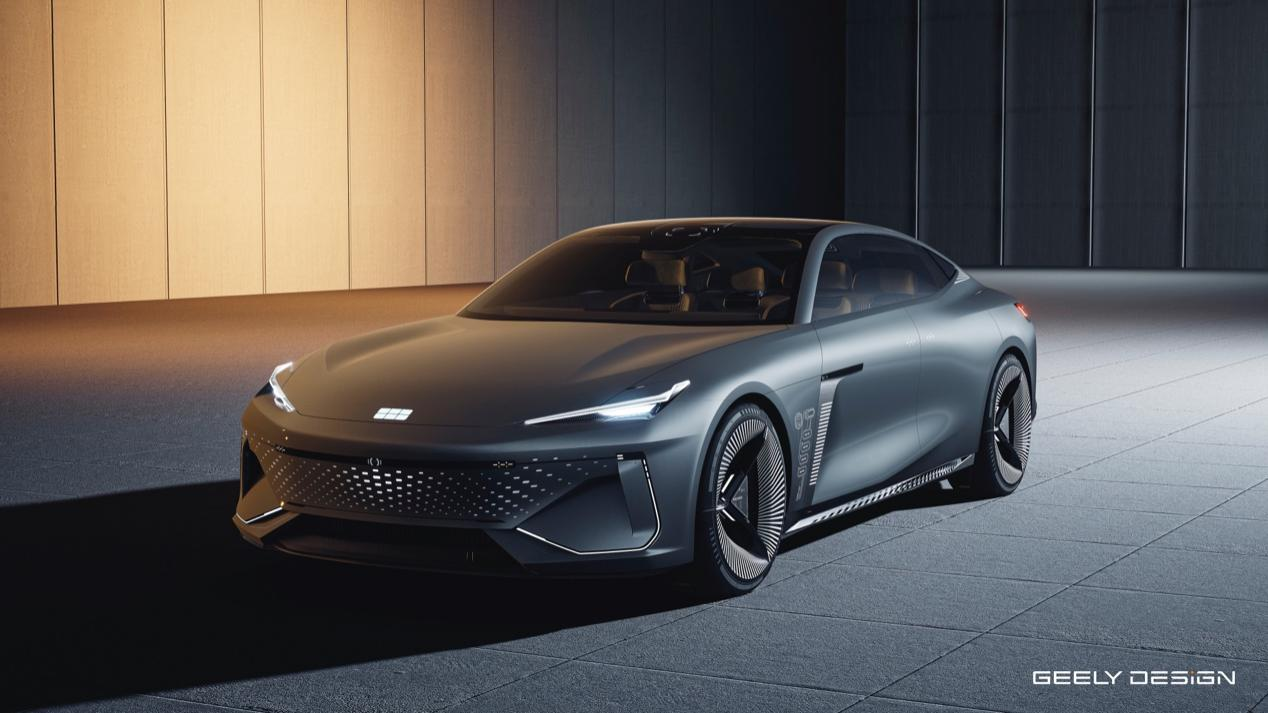Writing by | Zheng Wen
Editing by | Zhou Changxian
Recently, there has been a saying in the automotive industry: the era of electric car massacre has begun!
Indeed, this is an uncertain and extremely insecure era that we are currently in. Facing today’s users, the problems that stand in front of car companies have become very essential: what should intelligentization look like? What makes a good electric car? What is luxury? What is the design of the intelligent electric era supposed to look like? One problem after another.
The legendary designer, Giorgetto Giugiaro once said, “The styling design determines the fate of a car, this is not groundless.” As the “soul,” design, at a new era, is one of the many essential topics.
As the saying goes, “the spirit of the times makes heroes.” It is under the baptism of intelligent electrification that the design of Chinese independent brands is constantly updating people’s perception. At the same time, more and more local outstanding designers are emerging.
However, even in the electric intelligent era, they still need to answer a spiritual question: how to find unique vitality for the design language in the new era?
Recently, Geely Automobile Group CEO, Gan Jiayue and Geely Automobile Group Vice President of Design, Chen Zheng, brought a new work —— the Geely Galaxy series prototype car, the low center of gravity wide-body sedan “Galaxy Light”, which attempts to answer this spiritual question.
With over 20 years of domestic and international design experience, Chen Zheng is one of the leading figures in the Chinese automotive design industry that has grown in the country and has made important contributions to the development of independent brand design. A predecessor in the design field evaluated him like this: “Chen Zheng is the most knowledgeable designer of the cutting-edge trend among this generation of designers”.
In the automotive design industry, there is an unbreakable truth: good design has brand heritage and innovation. “Galaxy Light” is no exception, and its design vitality grows out of the Geely cultural system.
Geely believes that the design of this era requires our “internal cultural matrix”. Geely has been making cars for Chinese users, always following the gentleman’s aesthetic. This is also Chinese cultural aesthetics: ultimate goodness, beauty, and balance.
Based on the in-depth interpretation of Chinese aesthetics and the Geely brand core, and by finding innovative inspiration around mainstream user needs, the Geely design team boldly disassembles old elements and recombines them, creating a new Chinese electric car design paradigm with “Galaxy Light”, breaking away from the homogenized design of electric cars and creating a “new benchmark for Chinese intelligent electric car design”.
The New Paradigm of “Chinese Design”
Cars are a Western import, born in Europe 137 years ago. For a long time, car design has been based on Western aesthetics. To understand car design, we must first understand how the West designs–or, how they view design.
The golden ratio, the Fibonacci function… Western aesthetics are about form, pursuing truth and rationality, paying attention to proportion, structure, surfaces, elements, and details, layer by layer in order to strive for the authenticity of reality.
From the perspective of Western aesthetics, several key lines on the side of a car directly determine its posture – whether it is sporty or stable. The most important one is the Y0 line, which is called the centerline of car design, since it determines the size of the cabin, the height of the cabin, and the comfort of the passengers.
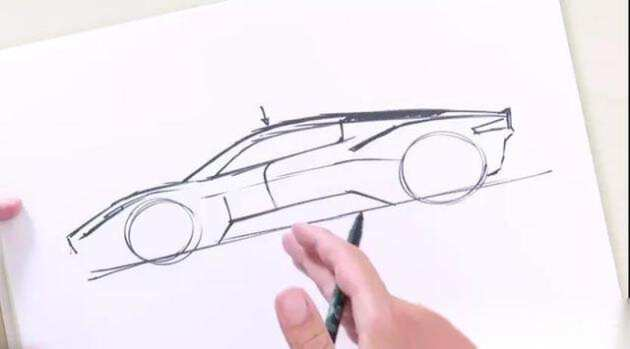
Several important lines converge to decide the contour of a car, including the waistline, shoulder line, outline line, skirt line, and hood line. The trend of the waistline directly represents the style of the entire vehicle.
In addition, the intersection of the A- and C-pillar lines is the visual center of the entire car. The larger the angle, the lower the visual center will be; the intersection point in front of the B-pillar will give the car a sense of forward motion; above the B-pillar, it will appear more elegant; behind the B-pillar, it will appear relatively stable.
The following image shows three examples of intersection points in front of, above, and behind the B-pillar:

Other important factors in car design aesthetics include proportion, surfaces, etc., which will not be elaborated on here.
In the collision between Western imports and this land of China, the design of Chinese cars has experienced a difficult development path. Initially, China’s car design was in a stage of outsourcing and imitation. Later, domestic brands began to hire foreign designers as design directors. For instance, Peter Horbury, Wolfgang Egger, Pierre Leclercq, and others. During this period, excellent Chinese designers emerged, including Chen Zheng, Zhang Fan, and others. Chen Zheng summarized this set of methodologies as “cultural aesthetics, brand essence, and customer needs”, which serves as the “yardstick” for regularly reviewing design solutions in the team.
Now, with the advent of the smart electric era, these outstanding designers have begun to take on new challenges–the innovation of the Chinese electric vehicle design paradigm.
Despite having the most extensive new energy market and the most inclusive new energy users, China lacks electric cars with a distinct “Chinese flavor”? What designers need to reconsider is how to design cars under the “new paradigm”.
No one can escape the era they live in, and designers are no exception. Therefore, following the rhythm of the times, the first step in designing modern cars is to understand the cultural background.
“When I started studying design, my teacher told me: if you want to design the future, you must know the past.” As a designer who embraces both Western and Eastern cultures, Chen Zheng has his understanding of car design.
He thinks that Western aesthetics are based on a five-dimensional rational aesthetic system, while Eastern aesthetics also have their own paradigms that were established through 6 traditional canons. Not only do they emphasize the exterior, but they also endeavor to restore the observer’s “mood”.
“Chinese aesthetics not only have the exterior design, but also an additional higher-order dimension of ‘animated spirit’. It concentrates on the importance of meaning more than merely form.”
Apart from the key elements of posture, proportion, and surface language mentioned before, the details are the icing on the cake of the entire car design. The front and rear combination lights are examples of details that can be incorporated into a designer’s interpretation of Chinese culture.
For example, in the case of the “Galaxy Light,” the front headlamps of the “flying eaves tiger view” incorporate elements from traditional Chinese architecture, as the flying eaves lift upwards, the tiger’s spiritual energy is projected to make the front face more vivid.
To differentiate the uplifted front, the rear lights of the “flying wing with heavy eaves” are more peaceful and flat, and they also reduce wind resistance. Both “tiger” and “flying eaves” symbolize spirituality and dynamism, which are “meanings” in Eastern culture.
In the interior, “Galaxy Cockpit Xi Zi’s Waterfront” injects Chinese romance into the smart cabin. By creating a seamless large-screen throughout the cockpit and replicating the beauty of the West Lake, it creates an immersive experience of “the Galaxy surrounds the sky, the West Lake dances on the earth.”Light Xizi Blue leather color, combined with natural bamboo fiber carpet, just like the rippling surface of the West Lake, with elements of “Three Ponds Mirroring the Moon”, “Xizi Waterfront”, “Shushan Inclines” and other themes intertwined in the cabin, achieving a new balance between humanity and technology.
Inspired by the Three Ponds Mirroring the Moon on West Lake, the suspended sound system, fragrances, and ambient lights are integrated into one, harmoniously complementing each other.
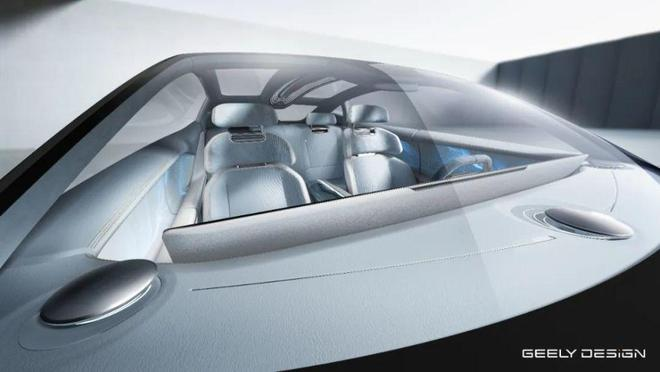
The central armrest box is inspired by the waterfront of West Lake. The lower section of the central armrest box is like the undulating hills surrounding West Lake, presenting an original cultural symbol unique to Geely, which is a poem written by Li Shufu, the founder of Geely.
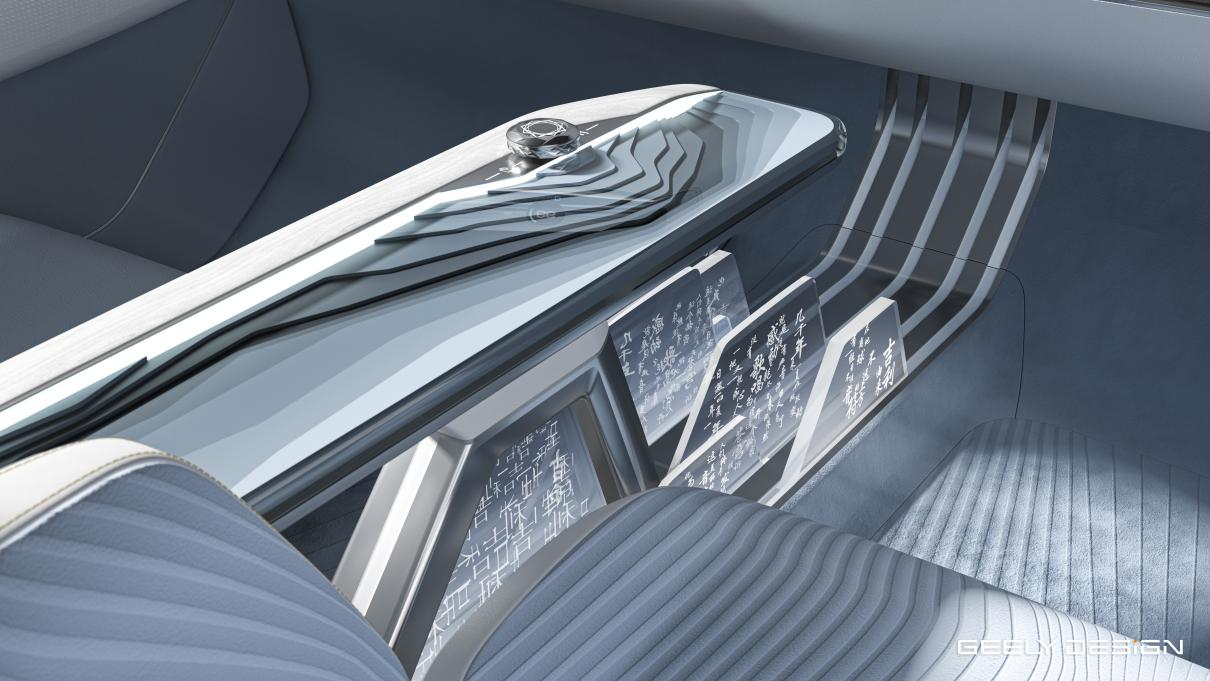
Within the small space of the entire intelligent cockpit, the landscape creates a sense of “after being drunk, I unknowingly return amidst the water, only to find myself in the midst of the stars and the galaxy”, which is a rare sense of comfort in today’s restless era.
This is the most unique aspect of Eastern aesthetics and a nourishment that is exclusive to Chinese people. It can be said that while “West Lake landscape” nurtures Geely cars, Xizi culture has also become the most “Chinese-flavored” expression in Geely’s design.
Regarding the appearance, there are many car models on the current market that compromise the styling design for some intelligent hardware, with less-than-ideal results.
It is worth noting that “Galaxy Light” has made a new layout and integration of satellite antennas, LiDAR, high-definition cameras, streaming rearview mirrors, and other intelligent hardware, with a very simple appearance. This conforms to Geely’s brand concept of “everyone’s boutique car”.
Innovation is everywhere, and inheritance is everywhere.

 ## Design can also follow “first principles”
## Design can also follow “first principles”
In today’s automotive design, if it is just an “industrial product”, it is difficult for consumers to agree with this point in the place where automotive culture is deeply rooted. They will think that cars are at least “industrial works of art”.
This is also an important reason why many fully competitive industries have winners taking all, but the automotive industry has many brands with their own beauty.
In the field of automotive design, the basic framework generally followed is that aesthetics are dominant, function implementation is the foundation, and policy regulations are hard requirements.
In the traditional era of fuel-powered cars, the engine was the core, and the interaction between automotive design and the engine was profound and entangled. The engine needs to dissipate heat and intake air, so the design must require a “grille”; to exhaust, different shapes and layouts of “tailpipes” are designed; the engine compartment needs to be wrapped down, which led to the shape of the hood…
In the era of electric and intelligent vehicles, with the electric motor as the driving form and intelligent as the important interactive means, what kind of change can automotive design have?

Obviously, traditional styling language cannot completely adapt to the new changes. However, in the past few years, there have been no particularly obvious changes in the trend of automotive design. The fundamental reason is that some models themselves use fuel-powered car platforms for “oil-to-electric” conversions.
However, with the birth of the electrification platform of many automakers, changes in functions have led to new design requirements. For example, the battery is placed under the floor, making the floor thicker; after the front and rear suspensions are shortened, the wheelbase becomes larger; the acceleration of the hood curve makes the front of the car lower, which may cause the tail to become heavy.
On the other hand, in the era of intelligent electric vehicles, the mechanical limitations on design are less, and the support of technology is more, which makes the space for play and creativity in design larger.
Some people say that now is the best time and the worst time for automotive designers.
The “classic aesthetic standards” of the hundred-year-old oil-powered car no longer seem to be a shackle. Now everyone is “blooming” in their own way, but it must be said that some have “gone too far”.
For example, in the era of fuel-powered cars, the front face was a “combination of six elements”: the upper air inlet grille, the lower air inlet grille, and the left and right upper and lower headlights and fog lights. The front grille, while intaking air, has also evolved into the brand’s largest logo.## Introduction
In the era of electric cars, the central element of the front design, the grille, has been removed, giving designers more imaginative and creative space to work with. However, the removed part happens to be the brand’s biggest logo, and the absence of the logo has resulted in objective reasons for homogenization.
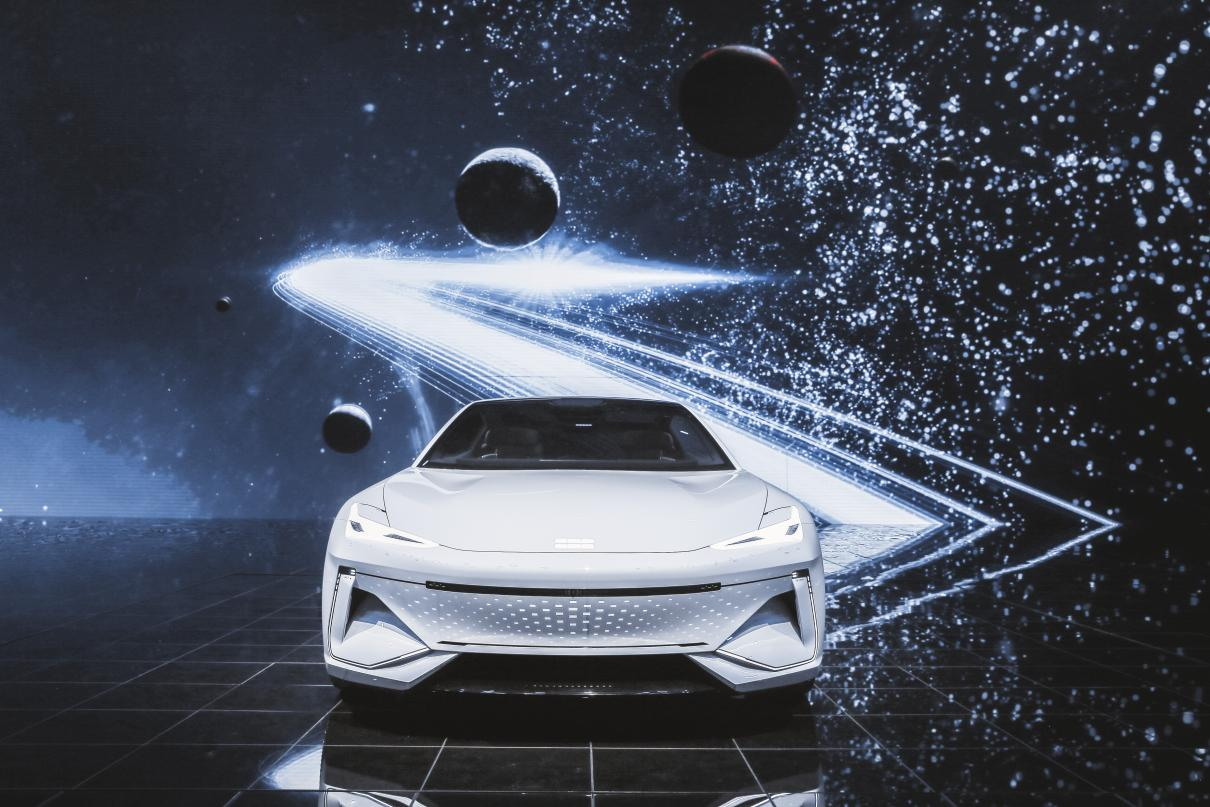
“The Light of the Galaxy” cleverly avoids this pitfall and reinterprets the brand’s unique rhythmic beauty of the “ripple” front face with optical techniques.
In the era of fuel-powered cars, the unique brand super symbol of Geely, the water ripple front face, created the beautiful Chinese cars of Geely. In the era of intelligent electric cars, this element has renewed vitality with the use of optical techniques.
“The Light of the Galaxy” jumps out of the uniformity of the face mask and takes on the new interpretation of Geely’s brand super symbol for the new era, becoming the front face of the “luminous ripple.”
Conclusion
Israeli writer Amos Oz once said, “We need to talk about the present and the future, and we should talk deeply about the past, but with a strict condition: we always remind ourselves that we do not belong to the past, but to the future.”
Today’s electric car design in China is no longer just about beautifying the industrial age aesthetic, but about innovation for the intelligent electric car era. It must be a combination of “appearance, function, and intelligence.”
Undoubtedly, “The Light of the Galaxy,” as the prototype of the Geely Galaxy series, meets this standard.
We believe that whether it is the brand’s super symbol “ripple,” the details of exterior and interior design based on Chinese culture, or the ideas inside the cabin, they are all new aesthetic standards for car design that cater to new consumer groups in the new era.
To a large extent, at the critical period of development of intelligent electricization, “The Light of the Galaxy” has laid the design foundation for Geely’s new energy transformation. For Geely, in the new era of electric car design in China, starting with “The Light of the Galaxy,” they have opened up a new paradigm for this industry, bringing significant and positive impacts to the Chinese electric car industry.# 标题
这是一段普通的文本,
直接换行并不能换行。。
如果想要换行,就要使用
标签。
如果想要段落,只需要在段落之间加一个空白行就好了。
如果想要显示图片,可以使用标签,具体方法请查阅相关文档。
如果想要显示超链接,可以使用标签,具体方法请查阅相关文档。
如果想要强调某段文字,可以使用标签,具体方法请查阅相关文档。
列表
无序列表
- 无序列表项 1
- 无序列表项 2
有序列表
- 有序列表项 1
- 有序列表项 2
代码
如果想要在文章中方便地显示单行代码,可以使用 `反引号` 将代码包裹起来。
如果想要显示多行代码,可以使用三个反引号将代码块包裹起来。
例如:
<html>
<head>
<title>Hello World!</title>
</head>
<body>
<h1>Hello World!</h1>
</body>
</html>
This article is a translation by ChatGPT of a Chinese report from 42HOW. If you have any questions about it, please email bd@42how.com.
